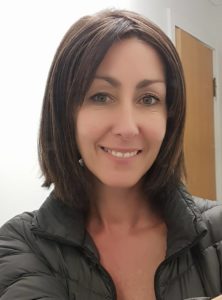
Faye Braddock is a very different woman to the one she was two months ago.
When the Times last spoke to her in late March, she was battling extreme fatigue and struggling with her cognitive function and mobility.
She struggled finding the right word in sentences, couldn’t walk far and was far from operating at full capacity.
Desperate to recover and improve her quality of life for her young family, she was busy fundraising for the only known treatment to stop Multiple Sclerosis (MS) in its tracks — Autologous Hematopoetic Stem Cell Transplantation (AHSCT).
MS is a long-lasting autoimmune disease that affects the brain, spinal cord and central nervous system. It causes the immune system to attack the myelin which wraps around nerve fibres to protect them. Without this outer shell, nerves become damaged which in turn prevents the brain from sending signals through the body correctly. The longer MS is left without treatment, the more damage that is caused.
AHSCT is still seen by some medical professionals as an experimental treatment. It is a type of transplantation that uses the person’s own stem cells which are collected, stored in sub-zero temperatures and then replanted at a later date after a high dose of
chemotherapy or immunosuppressive therapy. The immune system then begins to rebuild itself, theoretically with no memory of the MS disease.

Faye travelled to Moscow where she spent 32 days — 29 of which were gruelling treatment days — before arriving home on June 25.
The standard time frame to know whether or not the treatment has worked is generally three years — but for Faye, the change was near instant.
“They call it the HSCT rollercoaster — you come up and down and it could be three years before you reach your full capacity, but crikey it was instant for me,” she said.
“The scary thing about MS is you just don’t know what lies ahead. I didn’t want anything else to lie ahead, I just wanted it to get no worse. But the fact I’ve just had this massive U-turn and things are just incredible functional, way better than even before.
“I haven’t felt this good since before I had children.”
It wasn’t until feeling better that Faye realised just how sick she had been before.
“Now I’m back at work I’m realising what a poor job I was doing before I went away. Now I’m doing the same thing and I’m thinking ‘crikey’. Before it would take me a whole day to do something and I don’t even know if I was doing it properly.
“It’s just having that comparison — it’s only going to a place when you went to before and you think ‘wow I couldn’t do that, but now I can'”.
In the first Times story, Faye spoke of her two young children and how they needed her to be fully functioning as a parent. Now, she’s able to chase them around the park.
“We went out for a walk around Cornwall Park and took the kids to the playground and to the observatory. We parked further out and walked, had a little run, played with scooters — there’s just no way I could have done that before.
There’s no way I could have spent a day at the park with the children and go out and have fun together like we did that day. It’s just incredible.”
She says she enjoyed the long flight home because “this is where it all ends, but this is where it all starts as well.”
Previously, Faye had said she was inspired by the story of Australian woman and previous MS sufferer, Kristi Cruise. Before the AHSCT treatment, she’d been confined to a wheelchair. Three years after receiving the treatment, she ran a marathon.
“I’d love to be able to do something like that,” she says now. “I don’t know how to train but I’d love to learn how to train just because I could.
“I’ve never felt better in my life.”









